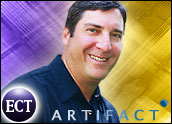
A U.S. Department of Health and Human Services contract awarded in November 2005 charged Accenture Health & Life Sciences and three other tech developers with the creation of a fully-integrated health information system to connect healthcare communities.
The project’s results had to be interoperable with solutions that other technology providers or healthcare organizations might develop. In addition, they had to respect the provisions of the Health Information Portability and Accountability Act (HIPAA).
CRM Buyer talked to Garret Wu, a partner at Accenture Health & Life Sciences, about the prototype delivered to Health and Human Services this winter.
CRM Buyer: How did Accenture get involved with the U.S. Department of Health and Human Services contract?
Garret Wu:
In April 2004, there was a presidential directive from the Office of Health Information Technology to demonstrate and build the capability to have electronic health records (EHR) for all citizens by 2014.
An EHR comprises an individual’s medical information including conditions, medication information, test results and treatment plans. The purpose of the prototypes to show that there could be a variety of solutions and architectures that support interoperability.
What was compelling about Accenture’s prototype was that we picked three regions in Appalachia — West Virginia Medical Institute, Commonwealth of Kentucky’s Eastern Region Health Community and CareSpark in Northeastern Tennessee and Southwestern Virginia.
Appalachia is an area typically underserved but representative of the U.S. because it doesn’t have health information exchanges that are operational. We wanted to be able to demonstrate that we could build out and connect in areas in which that didn’t exist yet.
CRM Buyer: What were your challenges in implementing the Accenture prototype? How did you try to ensure that physicians, clinicians and other medical personnel would use the network regularly?
Wu:
We wanted to normalize data so that terminology would be consistent. Our prototype shows that patient data can be extracted from disparate information systems and converted to a common format that enables sharing among physician offices, medical laboratories, hospitals and other clinical settings.
That’s something doctors have to do now on their own — to try to find a common understanding of terms used in patient records. We tried to eliminate that step for physicians by establishing a common language across a wide spectrum of healthcare systems.
Accenture’s prototype introduces both common language and data standards, and integrates information across the entire healthcare system. It enables a single view of a patient’s medical information. This helps provide better patient care, more consistent care and supports the secondary use of data — because data from multiple sources now can be easily aggregated for new learning like national monitoring of healthcare trends and identification of potential epidemics.
This can give researchers a head start in responding to bio-threats, pandemics or natural disasters, and ultimately in discovering and developing new disease therapies.
On a regional level, it means better healthcare provision planning due to more advanced clinical research, public health monitoring and effective care management.
CRM Buyer: How soon will a national health information system be rolled out to a wider network? Who makes that decision? The Department of Health and Human Services? Accenture? Hospital management companies?
Wu:
There are a lot of standards and policies still being developed across the group at Accenture and the federal government. One of the things we did because we used live data in the demonstration and had to be HIPAA compliant: We chose a policy of opt-in. Only patients who consented to participate would be included in the prototype. Their data was fully secure. You had to have data rights to access the information, and patients could control what physicians could see of their data. They could restrict certain data from the view of any one in their healthcare community. And the solution is fully auditable. Whatever is looked at and whoever looked at it is trackable.
CRM Buyer: What benefits does the health information system bring to the medical community and its patients? What detriments? Are there new privacy security risks? Other consumer patient concerns?
Wu:
We conducted an EHR consumer perception and physician adoption study. We interviewed 600 consumers and 100 physicians. Two-thirds of consumers said connected health records were important, and more than half said they would be willing to pay a fee for their physicians to have the capability to send and receive their data to and from other healthcare professionals.
They are starting to realize the benefits of physicians having comprehensive access to their medical records.
And an EHR gives ease in access to medical information to patients and their families. Children’s medical records for school registration could be accessed or released in real-time. I wouldn’t have to put in a request for them and write a check for (US)$12 for each copy I needed. Physicians with EHR are the single point where that information could be brought.
Physician benefits include easier sharing and obtaining of information, access to more patient information, fewer lost records, improved efficiency in patient billing and reduced clinical errors.
Ultimately, consumer and industry stakeholders alike will benefit from the enhanced quality, access and affordability of healthcare that result from these links.










































